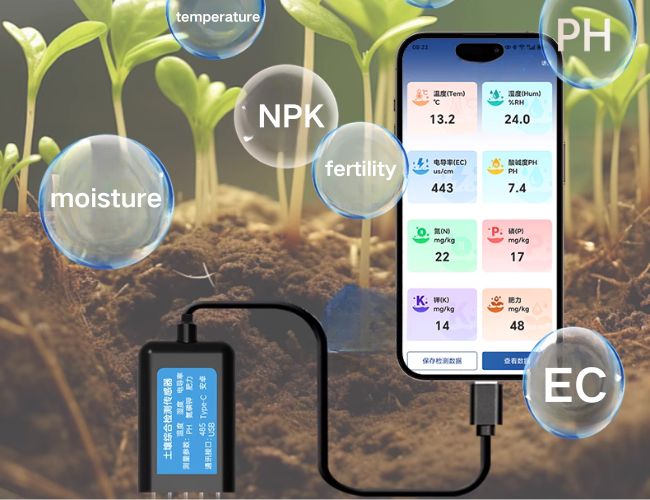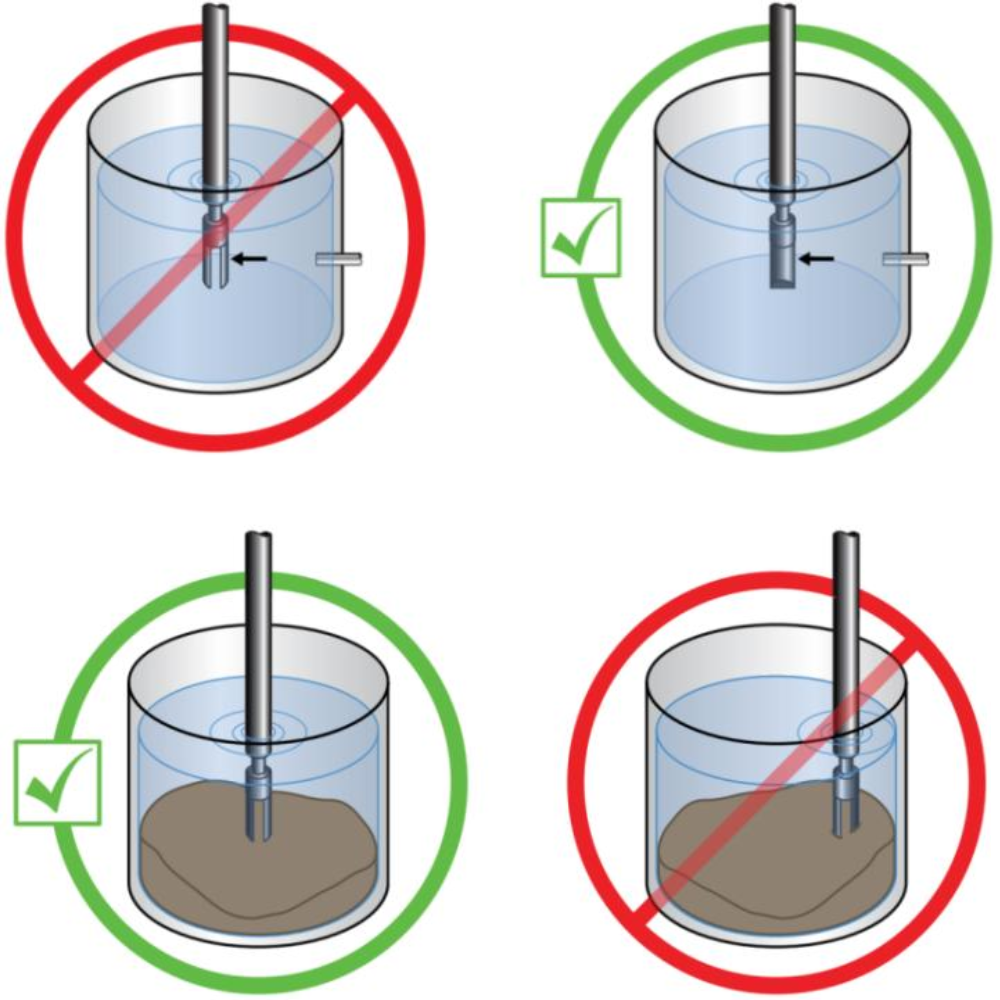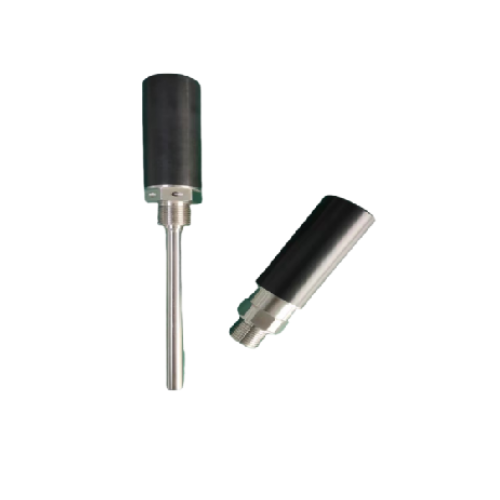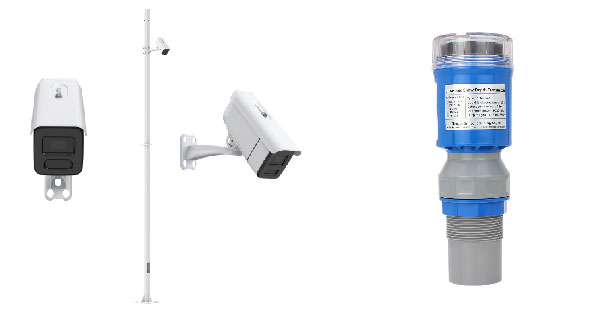Soil moisture sensor is also known as: soil moisture meter, soil hygrometers. It is mainly used to measure the relative water content of soil, to monitor soil moisture, and to protect agricultural irrigation and fore
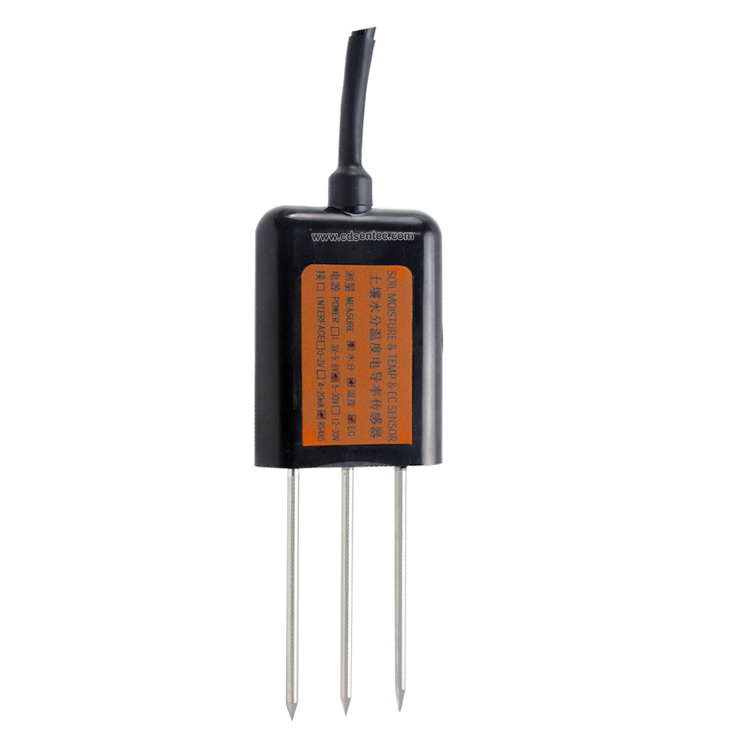
Soil moisture working principle
Soil sensors are mainly used to measure soil volumetric water content for soil moisture monitoring and agricultural irrigation and forestry protection. Commonly used soil moisture sensors are FDR type and TDR type.
SenTec soil sensors use the FDR-type measuring principle. FDR (Frequency Domain Reflectometry) is an instrument for measuring soil moisture. It uses the principle of electromagnetic pulse to measure the apparent permittivity (ε) of the soil according to the propagation frequency of electromagnetic waves in the medium, so as to obtain the soil moisture. Volumetric water content (θv), FDR has the advantages of simple and safe, fast and accurate, continuous fixed point, automation, wide range, less calibration and so on. It is a recommended soil moisture measuring instrument.
What is 3 in 1 soil sensor ?
3 in 1 soil sensor usually means the the integrated soil sensor to measure soil moisture, temperature, EC at the same time. The soil volumetric water content (θ), conductivity (ECb) temperature composite sensor is independently developed based on the dielectric theory and using the patented dual-frequency measurement technology, which can simultaneously measure the moisture, conductivity and temperature of soil and other porous media in situ.
Soil moisture sensor Applications
Soil sensors are widely used in water-saving agricultural irrigation, greenhouses, flowers and vegetables, grassland and pastures, soil rapid testing, plant cultivation, scientific experiments and other fields.
The soil moisture monitoring system can realize long-term continuous monitoring of soil moisture (soil moisture sensor). Users can flexibly arrange soil moisture sensors according to monitoring needs; they can also arrange sensors at different depths to measure soil moisture in profiles. The system also provides additional expansion capabilities, and corresponding sensors can be added according to monitoring needs, such as soil temperature sensors, soil conductivity sensors, soil pH sensors, soil NPK sensors, etc. The soil moisture monitoring system can comprehensively, scientifically and truly reflect the soil changes in the monitored area, and can timely and accurately provide the soil moisture status of each monitoring point, providing important basic information for disaster reduction and drought relief.
How to use the soil moisture sensor?
Since the electrode directly measures the conductivity of the soluble salt ions in the soil, the soluble ions in the soil can correctly reflect the conductivity of the soil when the soil volumetric water content is higher than about 20%. In long-term observations, measurements after irrigation or rainfall are closer to the true level. If a quick test is performed, the soil to be tested can be watered first, and the measurement can be performed after the water has fully penetrated.
If you measure on a hard surface, you should drill a hole first (the hole diameter should be smaller than the diameter of the probe), then insert it into the soil and compact the soil before measuring; the sensor should prevent violent vibration and impact, and it should not be knocked with hard objects. Since the sensor is packaged in black, the sensor will heat up sharply (up to 50°C or more) under strong sunlight. In order to prevent excessive temperature from affecting the temperature measurement of the sensor, please pay attention to shading and protection when using it in the field or outdoors. .
1 Quick test method
Select a suitable measurement location, avoid stones, ensure that the steel needle does not touch hard objects, discard the topsoil according to the required measurement depth, maintain the original tightness of the soil below, hold the sensor vertically and insert it into the soil, insert It is not allowed to shake left and right. It is recommended to measure multiple times within a small range of a measuring point to obtain an average value.
2 Buried measurement method
Dig a pit with a diameter > 20cm vertically, insert the sensor steel needle into the pit wall horizontally at a predetermined depth, and fill the pit tightly. After a period of stability, measurement and recording can be carried out for several days, months or even longer.
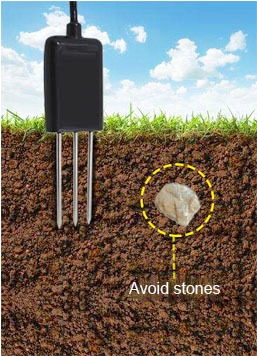
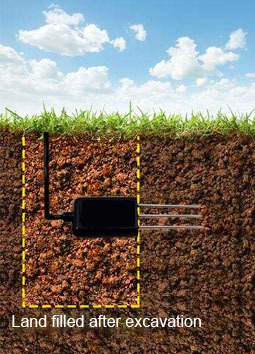
※Note: As one of the earliest sensor manufacturer, SenTec provide a wide variety flow environmental measurement solutions, such as T&H sensor, soil sensor, wind speed sensor, solar radiation sensor, light sensor, rain & snow sensor, water quality sensor, all in one weather station etc.
For specific T&H temperature and humidity sensor transmitter price, please contact our sales engineer.

